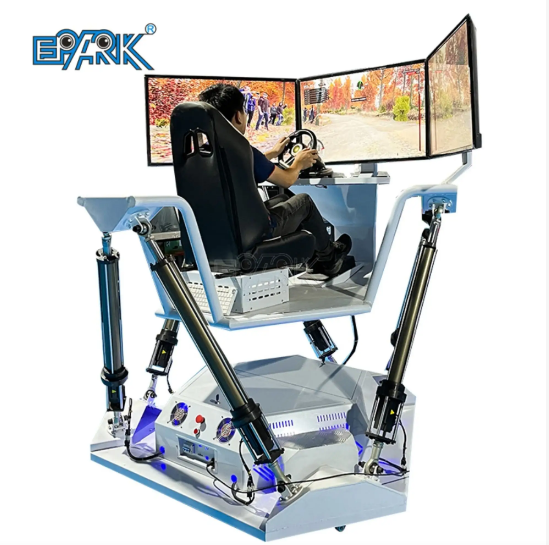AR, VR en MR: de verschillen en voordelen begrijpen
Vind je het leuk om te leren over virtuele realiteit, augmented realiteit en gemengde realiteit? Deze drie technologieën hebben nu al een tijdje golven veroorzaakt in de tech-industrie. Ze zijn innovatief, opwindend en potentieel levenstijdbewerkend. Maar wat betekenen ze? Wat zijn hun voordelen en hoe kunnen ze worden toegepast?
Laten we eens goed kijken naar AR, VR en MR door EPARK.

Wat zijn AR, VR en MR?
Allereerst, laten we deze drie technologische termen definiëren.
Augmented reality (AR) is wanneer digitale objecten op de echte wereld worden geplaatst, waardoor je interactie met je omgeving wordt verbeterd. Bijvoorbeeld, je kunt AR gebruiken om te zien hoe een nieuw meubelstuk eruit zal zien in je woonkamer voordat je het koopt.
Virtuele realiteit (VR) is wanneer je volledig wordt ondergedompeld in een digitale wereld. Je draagt een bril en gaat een 3D-omgeving binnen die je hersenen ervan overtuigt dat je ergens anders bent. VR Simulator wordt vaak gebruikt voor gaming, maar heeft ook toepassingen in sectoren zoals onderwijs en therapie.
Gemengde realiteit (MR), soms ook hybride realiteit genoemd, is een combinatie van AR en VR. In MR kunnen digitale en echte objecten met elkaar communiceren. Een goed voorbeeld is wanneer je een Geluidsafschermende pods hoofdset gebruikt die je laat zien digitale objecten in je echte omgeving.
Wat zijn de voordelen van AR, VR en MR?
Elke van deze technologieën heeft zijn eigen voordelen.
AR laat je je ervaringen verbeteren, die dagelijks kunnen zijn. Het helpt je ook bij taken zoals navigatie of leren over historische plaatsen. AR kan het onderwijs interactiever maken en veiligheid op de werkplek verbeteren.
VR is een persoonlijke immersive ervaring die je nieuwe werelden laat verkennen. Het kan therapie bieden als je zelf stress of angststoornissen hebt na traumatische gebeurtenissen. Het kan ook situaties simuleren voor oefen-doelen, zoals het leren om zware machinerie te bedienen.
MR combineert enkele mooie voordelen van zowel AR als VR. Het staat een hoger niveau van interactie toe tussen echte en digitale omgevingen. MR kan helpen bij dingen zoals productontwerp of op afstand samenwerken. Het kan ook entertainment-ervaringen verbeteren.
Eenvoudige Tips om AR, VR, en MR te Gebruiken
Het gebruik van AR, VR, en MR is nu makkelijker dan je misschien denkt. Om AR te gebruiken, heb je alleen een tablet of smartphone met camera nodig. Er zijn veel AR-apps beschikbaar in softwarewinkels of als ingebouwde functies op sommige slimme telefoons.
Om VR te gebruiken, heb je een VR-bril nodig. Er zijn veel VR-brillen op de markt met verschillende prijzen. Sommige brilmodellen vereisen een soort computer om te werken, terwijl andere rechtstreeks van een smartphone kunnen worden bediend.
MR-brillen zijn minder algemeen beschikbaar dan AR- en VR-brillen. Magic-brillen zijn een aantal van de producten die mogelijk voorop lopen in MR.
Veiligheid en Kwaliteit
Veiligheid kan een belangrijke overweging zijn bij het gebruik van AR, VR en MR. Bij het gebruik van VR, bijvoorbeeld, moet je oppassen dat je niet struikelt of stoot tegen voorwerpen in de echte wereld omdat je geïmmobiliseerd bent in de digitale wereld. Sommige mensen kunnen ook bewegingsziekte of hoofdpijn ervaren na het gebruik van VR.
Kwaliteit is een belangrijk onderdeel bij het gebruik van AR en VR. Slechte kwaliteit kan immersie verstoren, wat resulteert in een minder aantrekkelijke ervaring. Evenzo kunnen AR-apps van slechte kwaliteit frustrerend en moeilijk te gebruiken zijn.
Toepassingen van AR, VR en MR
AR, VR en MR worden gebruikt in veel industrieën, van entertainment tot gezondheidszorg tot onderwijs. In de entertainmentsector kunnen VR en AR gaming-ervaringen verbeteren, ze meer immersief maken zoals in arcade spelautomaat . MR biedt nieuwe methoden om films of televisieprogramma's te bekijken.
In de gezondheidszorg kan VR therapie bieden bij psychologische gezondheidsaandoeningen. AR kan helpen bij chirurgische ingrepen door interactieve weergaven van relevante informatie te geven. MR kan helpen bij het trainen van artsen voordat ze echte situaties tegenkomen.
In het onderwijs kunnen AR en VR interactieve ervaringen bieden waardoor leeractiviteiten aantrekkelijker worden. Geschiedenislessen kunnen AR-overlays bevatten die evenementen illustreren en leerlingen toelaten om ze dieper te verkennen. MR kan faciliteren bij op afstand samenwerken en projectgericht leren.

